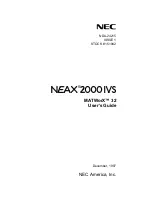
Multiple Concurrent Lockstep Operations
Because DoLockstep suspends the calling application until the associated lockstep transaction
commits on the backup system, a single application process cannot have more than one lockstep
operation in progress at any one time.
Multiple application processes, however, can invoke DoLockstep concurrently.
If called while idle, the RDF gateway immediately initiates a lockstep transaction to perform the
requested lockstep operation (one calling process, one lockstep transaction).
If called while it has a lockstep transaction active, the RDF gateway merely queues the request.
When the current lockstep transaction commits, the gateway initiates a new one that performs
the lockstep operation collectively for all of the queued requests (multiple calling processes, one
lockstep transaction).
Because the business transactions of each application process must have committed on the
primary system before the process called DoLockstep, the audit data for those is guaranteed to
be in the Master Audit Trail (MAT) when the lockstep transaction begins. Thus, when the lockstep
audit data is committed on the backup system, all audit data generated in the MAT prior to that
data is also guaranteed to be committed on the backup system.
Lockstep and Auxiliary Audit Trails
You can use the lockstep protocol for business transactions involving files or tables on volumes
that are configured to auxiliary audit trails. In such a case, the lockstep protocol behaves exactly
as it would if all volumes were configured to the MAT. Remember, however, that you must still
configure an RDF lockstep volume for the lockstep file, and this volume must be configured to
the MAT.
The Lockstep Gateway Process
The RDF lockstep gateway process is managed by the Subsystem Control Facility (SCF). To start
a lockstep gateway process, you must create and execute an SCF script file. The recommended
script settings are:
ASSUME PROCESS $ZZKRN
ADD #LSGO, &
NAME $ZLSGW, &
CPU FIRSTOF (1,2,3), &
PROGRAM volume.subvolume.LSGO, &
STARTMODE APPLICATION, &
STARTUPMSG "ENABLE <extractor-process-name>", &
AUTORESTART 10
START #LSGO
For detailed information about these attributes, see the information about configuring and
managing generic processes in the SCF Reference Manual for H-Series RVUs. For some attributes,
however, restrictions apply when the attributes are used with a lockstep gateway process.
NAME
This attribute must be $ZLSGW. If you specify anything else, the lockstep gateway stops and
you cannot perform lockstep operations. This means you can only have a single lockstep gateway
process running on your primary system.
PROGRAM
This attribute specifies where the RDF gateway object code resides. Typically, that location is
the same volume and subvolume where all of the other RDF software resides. The object name
is LSGO, and that you must fully qualify the name. For example, you might specify the PROGRAM
attribute as $SYSTEM.RDF.LSGO.
312
Process-Lockstep Operation
Summary of Contents for NonStop RDF
Page 68: ...68 ...
Page 186: ...186 ...
Page 260: ...260 ...
Page 278: ...278 ...
Page 284: ...284 ...
Page 290: ...290 ...
Page 308: ...308 ...
Page 322: ...322 ...
Page 336: ...336 ...
Page 348: ...348 ...
Page 464: ...464 ...
Page 478: ......
















































